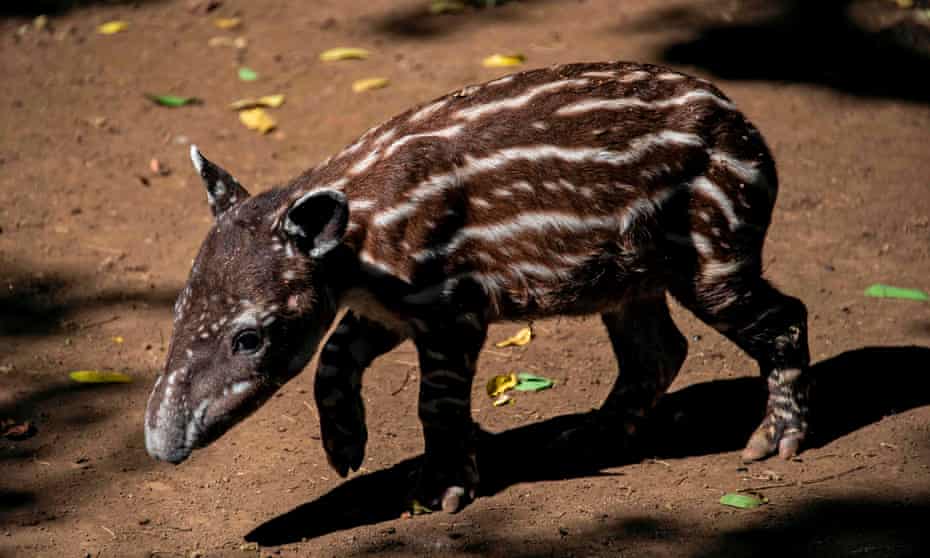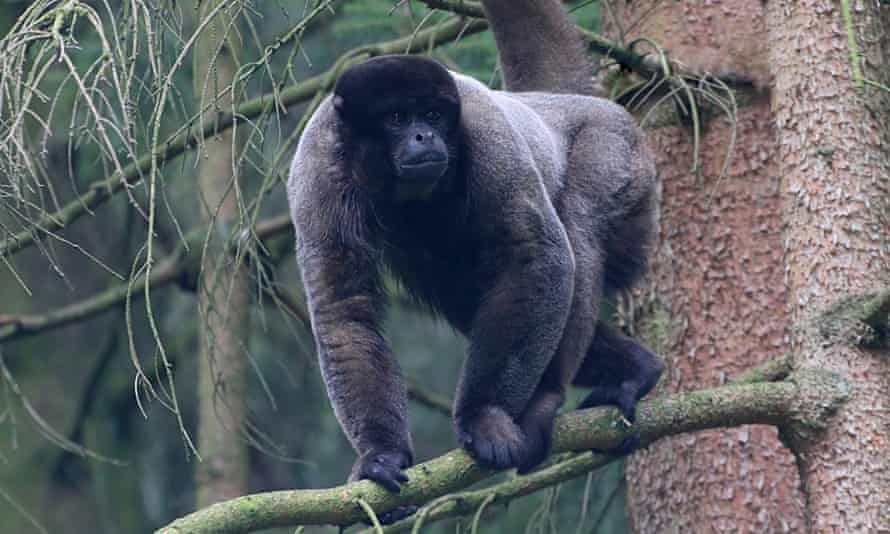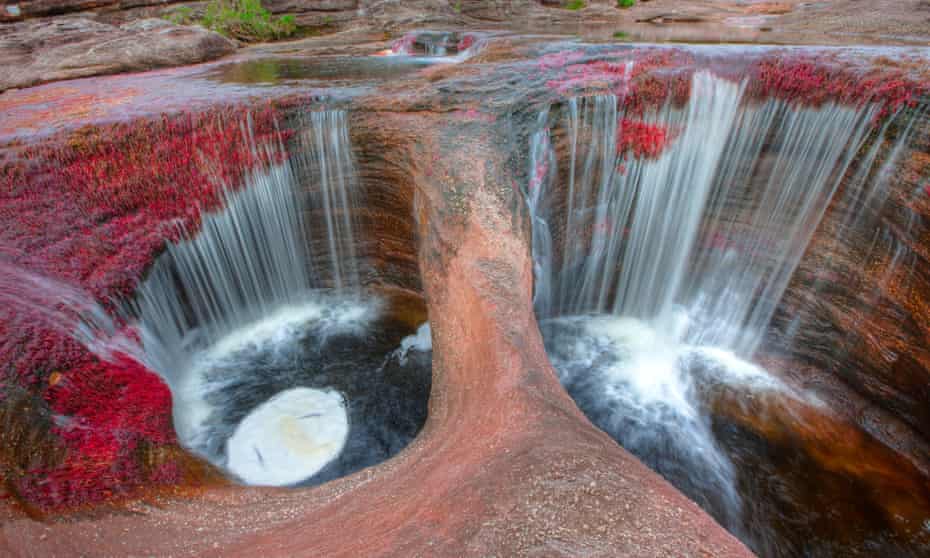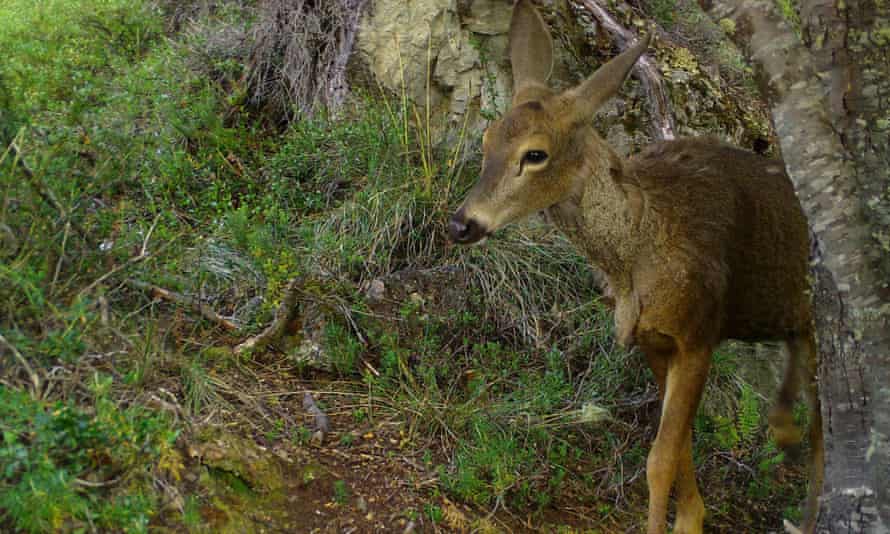In 1947, Christopher Isherwood undertook a six-month tour of South America, concentrating on cultural sites, large cities and hobnobbing with local grandees. The title of the travelogue he wrote about the trip, The Condor and the Cows, sums up how most Europeans felt about South America. While the condor has since been pushed to near-extinction, the cows have persisted: Argentina, Brazil, Uruguay and Venezuela are still seen by outsiders as primarily farming nations and global breadbaskets.
Other Latin American countries are known for their wine, coffee, tropical fruits, soya beans and fishmeal. Colombia, the most biodiverse country in the world per square kilometre, is known more for its exports of cocaine than for its dazzling birdlife.
But conservationists across several countries are trying to redress this imbalance. At the end of 2020, the Rewilding Argentina Foundation reported that the first red-and-green macaw chicks had been born in the north-east’s Ibera wetlands for over a century. Hunted for their feathers, meat and as pets, and decimated by habitat loss, the birds are listed as critically endangered in Argentina; another once-widespread species, the blue-grey glaucous macaw, is extinct.
Elena Martin, who oversees the macaw breeding project, says: “The reproduction of the scarlet macaw in the wild is very important for our project because it helps us create sustainable populations so they fulfil their role in the ecosystem.” Macaws help spread seeds and repopulate areas with trees.

The macaws are part of an ambitious scheme to reintroduce several animals to their former ranges, including anteaters, lowland tapirs, pampas deer, collared peccaries, giant river otters and jaguars; the restoration of apex predators and carnivores is vital to controlling other populations and balancing the food chain. Two jaguar cubs were born in captivity in November 2020 and it is hoped jaguars can be released into the wild in the coming year.
Meanwhile, the Colombian government recently passed into law wide-reaching sustainable tourism policies under the banner Together With Nature. The country’s vice-minister for tourism, Julian Guerrero Orozco – who used to work as a wildlife guide in Tanzania – says the country is only now waking up to its potential as a nature-tourism destination. “We have an opportunity to build a new kind of tourism, which is more serious and better researched. I really believe Colombia could provide a model for sustainability for the rest of the world.” Colombia is a signatory of the Future of Tourism Coalition, which commits members to a range of ecological and environmental goals.
Decades of civil strife and drug wars in Colombia have kept areas off limits to developers, making them ideal for rewilding and ecotourism. Scientists from the University of the Andes have released six woolly monkeys into the forests of southern Huila, rescued red-footed tortoises have been released in the Meta department and former FARC combatants have been recruited to retrain as conservationists and forest guardians as part of the Peace with Nature programme.

The town of La Macarena, south of Bogota, is notable for its biodiversity as well as attractions such as the many-hued rivers of Cano Cristales and ancient rock art in the Chiribiquete national park. According to pioneering conservationist Roque Sevilla, president of Fundacion Futuro and creator of Ecuador’s Mashpi Lodge, the region has a lot of potential for ecotourism. “I first visited three years ago and was quite simply blown away. The variety of wildlife is spectacular: on a short first trip down the Guayabero River we saw six species of monkey, two species of dolphin, caimans, many hundreds of birds. We placed one camera trap and in just four hours of filming had captured footage of a tapir, a jaguar, a puma and a raccoon.
“The rich geology and history mixed with endless natural wonders make it, in my mind, the most beautiful place in Colombia, and perhaps in the whole region.”

In Ecuador and Peru, community-led programmes, forest purchases and monitoring schemes are helping protect spectacled bears, as well as ocelot, jaguarundi and mountain tapir. In Chilean Patagonia, Tompkins Conservation espouses a “rewilding approach to conservation”, creating corridors for pumas and other wild cats, huemul deer, Darwin’s rhea, guanaco, Wolffsohn’s vizcacha and condor.
Comuna do Ibitipoca, an eco-tourism resort in Minas Gerais, Brazil, has begun a long-term scheme to rewild key species of its much-reduced Atlantic rainforest. It has licences to reintroduce the tapir, the red macaw, the woolly spider monkey and two spectacular birds, the solitary tinamou and the black-fronted piping guan.
Across these areas, tourism can be a means of monetising and furthering rewilding. The best projects, says Thomas Power, co-founder of tour operator Pura Aventura, spring from local needs and knowledge and are open to travellers on ordinary budgets. “Chile’s Route of Parks is an ambitious, world-class model of development through conservation tourism. It connects 17 national parks covering 11.8 million hectares of pristine wilderness along a 1,740-mile route linking more than 60 communities. Vast grasslands, once destroyed by overgrazing and divided up by miles of fencing, are flourishing again thanks to pioneering rewilding work.
“What’s so special about this region for visitors is that instead of luxury hotels, they can stay with local hosts in their privately owned guest houses. Because these places are so remote, getting there is by no means cheap, but visitors help create the financial incentive for local people to protect these precious habitats over the long term.”

Many Latin American regions rival the likes of Madagascar, South Africa and the Democratic Republic of Congo in terms of biodiversity. Tourism bosses hope that one day the Argentine pampas and Brazilian cerrado (a vast savannah region) might merit the kudos among wildlife tourists enjoyed by the African grasslands.
South America already has its big five (for the record, they are jaguar, anteater, tapir, river otter and maned wolf). It already has tented and portable camps in its national parks. It already has extravagant topography, biting insects, hairy spiders and venomous snakes, and things that squawk and squeal in the night. If it lacks wildebeest and buffalo, it at least boasts teeming herds of Aberdeen Angus and Hereford cattle.
While it also faces hefty challenges – from Chinese fishing fleets near the Galapagos to fires raging in the Amazon – rewilding and conservation schemes allied to ecotourism and political will could be transformative for the continent.
“Safari hotspots in Africa are home to a huge number of mammals – but fewer species and less biodiversity when it comes to insects, bird species and flora than places in South America, where the sheer number of species is extraordinary,” says Roque Sevilla.
“As long as one can understand and appreciate the differences between American and African ecosystems, South America can absolutely compete.”